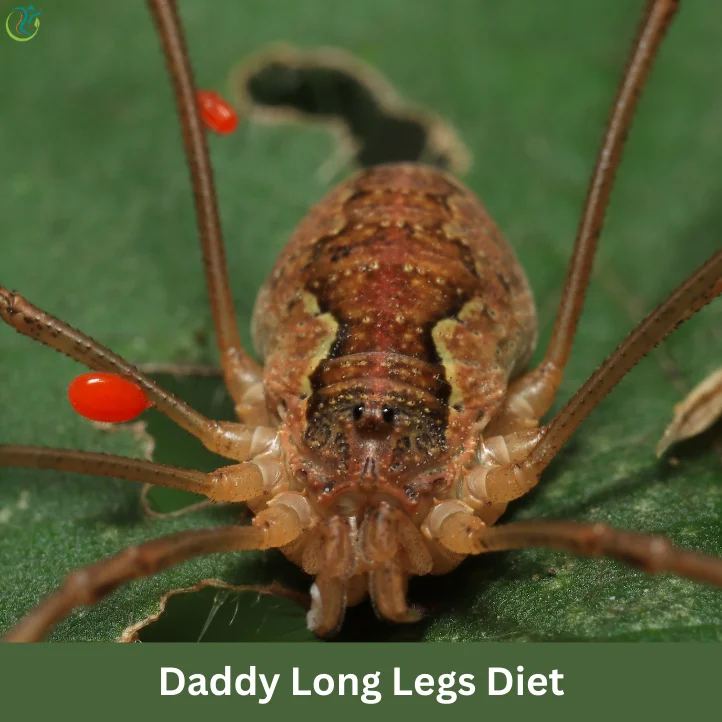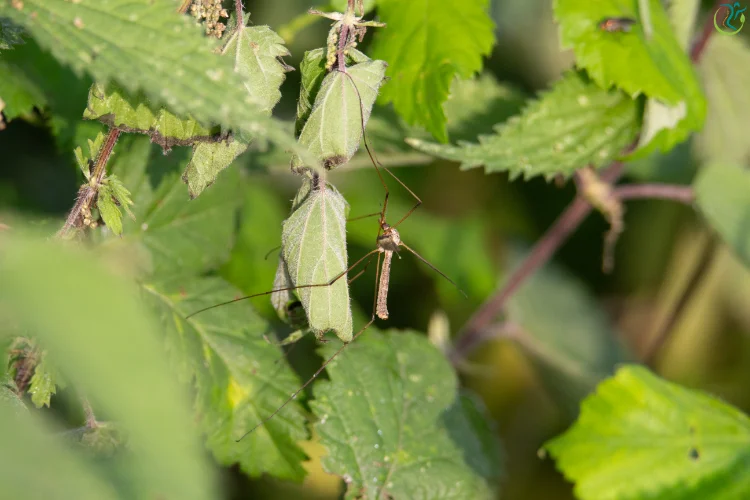
Daddy long legs, often mistaken for spiders, are fascinating arachnids that play a crucial role in ecosystems around the world. Despite their appearance, these creatures are mostly harmless to humans. Their diet and feeding habits are essential to their survival, and understanding them can shed light on their ecological importance. In this article, we will dive into the daddy long legs diet, explore their feeding habits, and highlight their role in pest control and ecosystem balance. Whether you’re curious about attracting them to your garden or home or just want to learn more about these interesting creatures, this guide will provide all the details you need.
What is the Daddy Long Legs Diet?
The daddy long legs diet is varied and largely dependent on the species. These arachnids are opportunistic feeders, meaning they consume whatever food is available to them. This flexibility in diet makes them adaptable and able to thrive in diverse environments. Some common food sources for daddy long legs include small insects, decaying organic matter, fungi, and other arthropods. Understanding their feeding habits is key to appreciating their role in the environment.
What Do Daddy Long Legs Eat?
When it comes to their diet, daddy long legs are not picky eaters. Below are some of the most common food sources for these arachnids:
Small Insects
One of the main components of the daddy long legs diet is small insects. These creatures are natural predators, and they use their long legs to grab and immobilize their prey. Common insects they feed on include ants, aphids, flies, and other small pests. Daddy long legs contribute to natural pest control by reducing the population of harmful insects, which is beneficial for both gardens and homes.
Decaying Organic Matter
Certain species of daddy long legs help break down organic matter by feeding on decaying plants and insects. This can include decomposing plant material, dead insects, and other organic waste. By consuming decaying matter, they help recycle nutrients back into the ecosystem, playing a vital role in maintaining soil health and promoting a balanced environment.
Fungi
Another interesting aspect of the daddy long legs diet is their ability to feed on fungi. Certain species of daddy long legs have been observed consuming mold and fungi, which further supports their role in decomposition. As fungi break down organic material, daddy long legs assist in this process, ensuring that nutrients are returned to the soil.
Small Arthropods
In addition to insects, daddy long legs may also feed on other small arthropods such as mites, springtails, and other tiny creatures found in damp environments. These small arthropods are an essential part of the food web, and by feeding on them, daddy long legs help control populations and maintain balance in their habitats.
How Do Daddy Long Legs Feed?

Daddy long legs are known for their exceptional feeding strategy, which differentiates them from other arachnid species. Daddy long legs have unique mouthparts known as chelicerae, which they use to seize and manage their prey. These mouthparts have small pincers that help break down prey. In some cases, daddy long legs inject digestive enzymes into their prey, liquefying the tissues before consuming the nutrients.
This method is similar to that of other arachnids, such as spiders, that liquefy their food before ingestion. This digestive process ensures that daddy long legs can efficiently extract the nutrients from their prey.
Do Daddy Long Legs Need to Eat Frequently?
The daddy long legs diet is influenced by their metabolic rate, which is relatively low. As a result, these creatures do not need to eat as frequently as some other animals. Depending on their size, species, and the availability of food in their environment, they may only need to feed every few days or even once a week. However, during certain periods of increased activity, such as mating seasons or when food is abundant, they may eat more frequently.
In general, daddy long legs can survive with minimal food intake, making them adaptable to a wide range of environments. Their low metabolic needs also contribute to their ability to thrive in areas with limited food resources.
Why Daddy Long Legs Are Vital for Ecosystem Sustainability
Daddy long legs play an essential role in maintaining the balance of ecosystems. By consuming a wide range of food sources, they help control populations of small insects, arthropods, and fungi, contributing to pest management and natural recycling processes.
Natural Pest Control in Gardens
In gardens, daddy long legs serve as natural pest controllers. They feed on a variety of small pests, such as aphids, flies, and other insects that can damage plants. By keeping the population of these pests in check, daddy long legs help protect the plants from being eaten or infected by harmful bugs. Their presence in the garden promotes a healthy and balanced ecosystem.
Moreover, daddy long legs often attract other beneficial predators, creating a more diverse and sustainable environment. For gardeners looking to reduce their reliance on chemical pesticides, encouraging daddy long legs can be an effective, eco-friendly solution.
Pest Control in Homes
In homes, daddy long legs can also help with natural pest control. These arachnids are particularly effective at managing the populations of mosquitoes, moths, flies, and other insects that may infest living spaces. Their presence can reduce the need for chemical pest control methods, which is especially beneficial for families with children or pets who may be sensitive to harsh chemicals.
By providing an environment that supports daddy long legs, you can maintain a healthier, safer, and more eco-friendly home. Plus, daddy long legs are completely harmless to humans, so you can enjoy their benefits without worrying about them posing any risk.
How to Attract Daddy Long Legs to Your Garden or Home

If you want to support a thriving population of daddy long legs in your garden or home, there are a few steps you can take to create an inviting environment.
Provide Shelter and Hiding Spots
Daddy long legs thrive in environments where they can find shelter and rest. To draw them in, offer hiding places like:
- Tall grasses
- Leaf piles
- Damp areas under rocks or logs
- Mulch or compost piles
These sheltered areas offer the perfect conditions for daddy long legs to hide from predators, hunt for food, and rest in a safe environment.
Minimize Chemical Use
To support the natural diet of daddy long legs, it’s important to minimize the use of chemical pesticides in your garden or home. Pesticides can poison the small insects that daddy long legs feed on, thus reducing their food supply. By focusing on organic pest control methods, you can create a more suitable environment for these beneficial arachnids.
Encourage Healthy Insect Populations
For daddy long legs to thrive, it’s essential to foster a healthy population of insects in your garden. Planting flowers and shrubs that attract insects—such as sunflowers, daisies, and other nectar-rich plants—will provide a steady food supply for daddy long legs. A diverse insect population will help support not only daddy long legs but also other beneficial creatures that contribute to the ecosystem.
The Benefits of Encouraging Daddy Long Legs in Your Home and Garden
There are several benefits to promoting a healthy population of daddy long legs in your space:
Pest Control without Chemicals
Daddy long legs provide a natural form of pest control. By feeding on mosquitoes, flies, and other insects, they reduce the need for chemical pesticides. This is especially important for people seeking more sustainable and environmentally friendly solutions for pest management.
No Threat to Humans
Despite their creepy appearance, daddy long legs are harmless to humans. They are non-venomous and do not bite. Their presence in your home or garden is beneficial, and you don’t need to worry about them causing harm.
Maintaining a Balanced Ecosystem
By allowing daddy long legs to inhabit your garden or home, you contribute to a more balanced ecosystem. These arachnids help regulate insect populations, promote natural pest control, and support the decomposition of organic matter. They help sustain the health of ecosystems by controlling pest populations.
Conclusion: Why You Should Embrace the Daddy Long Legs Diet
The daddy long legs diet is an essential aspect of understanding these fascinating creatures. By feeding on small insects, decaying organic matter, fungi, and arthropods, they play a vital role in maintaining balance in the ecosystem. Encouraging daddy long legs in your garden or home offers many benefits, including natural pest control, reduced reliance on chemical pesticides, and a healthier, more sustainable environment.
By providing the right conditions and minimizing chemical use, you can support a thriving population of daddy long legs. These arachnids will help manage pests, promote decomposition, and contribute to a balanced, chemical-free space. Whether you’re looking to improve your garden’s ecosystem or reduce household pests, understanding and supporting the daddy long legs diet is a step toward a healthier, eco-friendly living environment.

Dear Readers, I’m Salman Khayam, the writer and founder of this blog, dedicated to bringing you valuable insights across a variety of topics. From dental and mental health to personal development, beauty, skincare, hair care, nutrition, fitness, and exercise, my goal is to empower and inspire through well-researched, engaging content.
